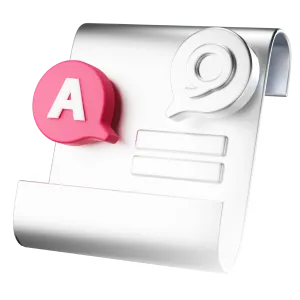Radiator hoses act as the vital arteries of your car’s cooling system. They’re responsible for transporting coolant between the engine and the radiator.
The coolant flows through hoses to cool off the hot parts of your engine before heading back to the radiator, where it’s cooled down and then circulated back to the engine to absorb more heat. This continuous cycle prevents the engine from overheating, ensuring smooth operation and preventing costly damage.
When one of these hoses starts deteriorating and leaks, you’ll begin having overheating issues.
How much is a radiator hose replacement?
The cost of replacing radiator hoses varies between $350 and $630. Generally, your car will have two radiator hoses—an upper and a lower. Even if only one of the two are damaged, your mechanic might suggest replacing both. The justification is that if one of your hoses has failed, then the other one shouldn’t be too far behind. You will generally also have to pay for a coolant flush and burping air out of the system.
Parts
Your choice of parts is an important factor in forming the final bill for your repair. Let’s assume that you need to replace both the upper and lower radiator coolant hose—here’s how much it would cost if you bought the parts from Ford for a 2015 Ford F-150:
| Part name | Price ($) |
|---|---|
| Radiator coolant hose – upper 5.0l | 105.54 |
| Radiator coolant hose – 5.0l | 144.98 |
| Total | 250.52 |
Comparatively, if you buy aftermarket hoses from Autozone, your cost for the two hoses goes down:
| Part name | Price ($) |
|---|---|
| Duralast Coolant Hose F10356 (Upper) | 62.99 |
| Dorman – OE Solutions Radiator Coolant Hose 626-541 | 76.99 |
| Total | 139.98 |
You should also factor in the costs of doing a coolant flush, which should be anywhere between $90 to $250.
How long does it take to replace a radiator hose?
Changing a single radiator hose usually takes between one to 2.5 hours of labor. Mechanics’ per-hour rates across the United States now range from $110 to $175, meaning this job could cost $110 for one hour of labor at the lowest rate and up to $437.50 for 2.5 hours at the most expensive rate.

Xuyun Zeng is a writer and editor with a wide-ranging content background including tech, journalism, cars and health care. After graduating with highest honors in journalism, Xuyun led a newspaper to win eight awards, helped start an award-winning film industry podcast and has written over a hundred articles about cars repair, state laws and insurance. Prior to joining Jerry, Xuyun worked as a freelance SEO consultant with a mission to create the best content that will help readers and grow organic traffic.

Everett Cook is an award-winning journalist and editor with more than 10 years of experience across a variety of industries. In editing for Jerry, Everett’s mission is to help readers have a better understanding of the costs of owning or leasing a car and to better understand their vehicle in terms of insurance and repairs. Prior to joining Jerry, Everett was an editor for Axios. His previous work has been featured in The New York Times, The Los Angeles Times, The San Francisco Chronicle, The Atlantic, Atlantic Re:think, The Boston Globe, USA Today, and others. He’s also been a freelance writer and editor with experience in SEO, audience building, and long-term content roadmaps. Everett is a proud graduate of the University of Michigan.







